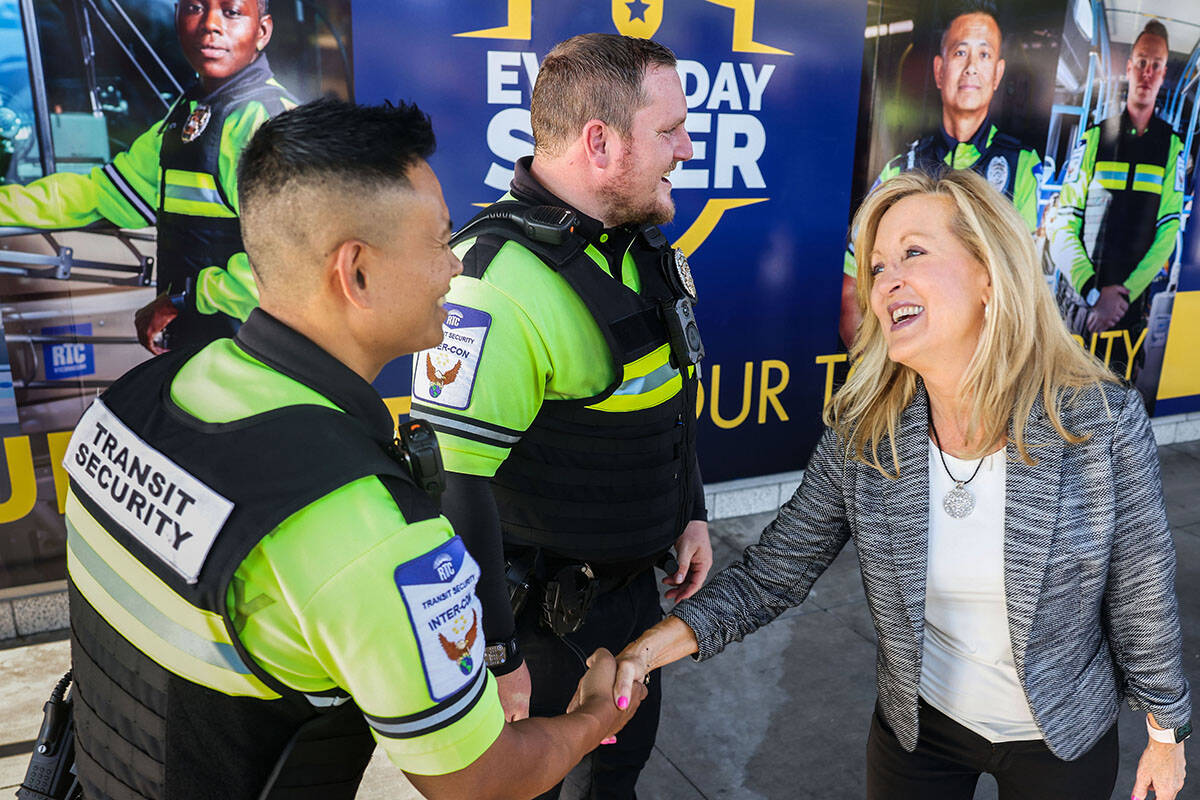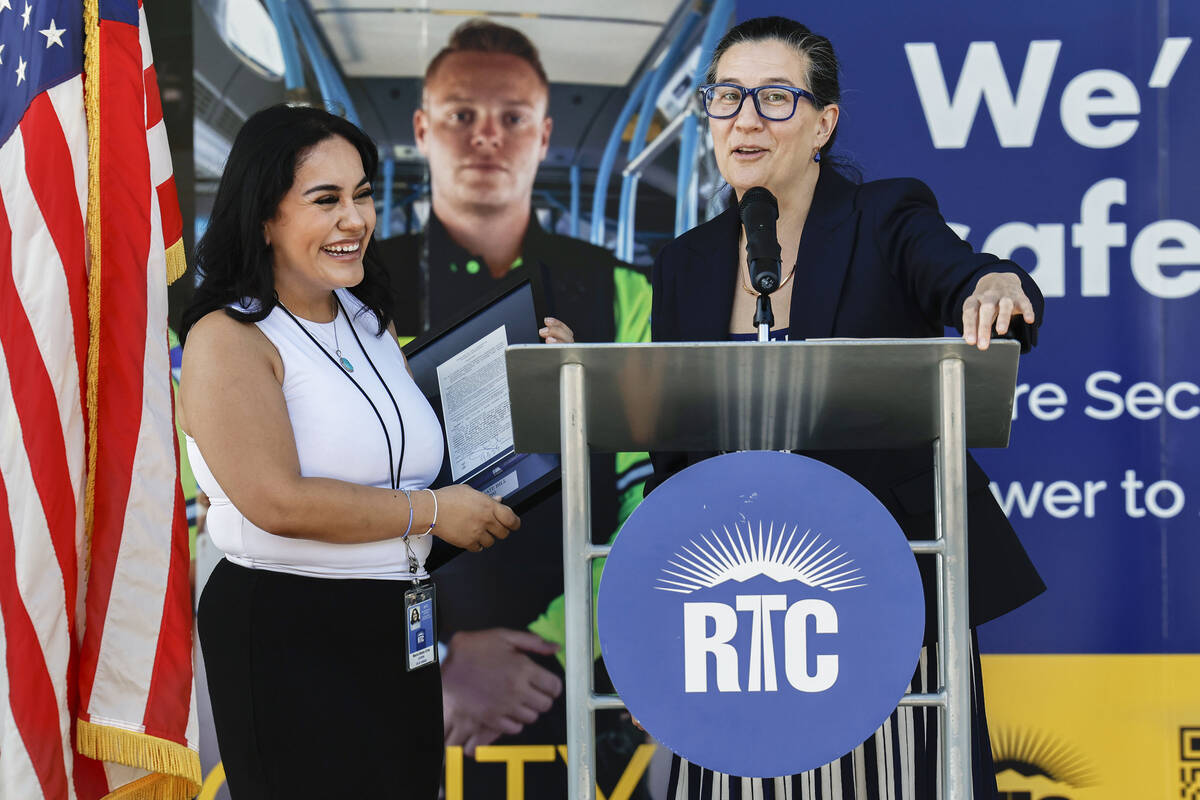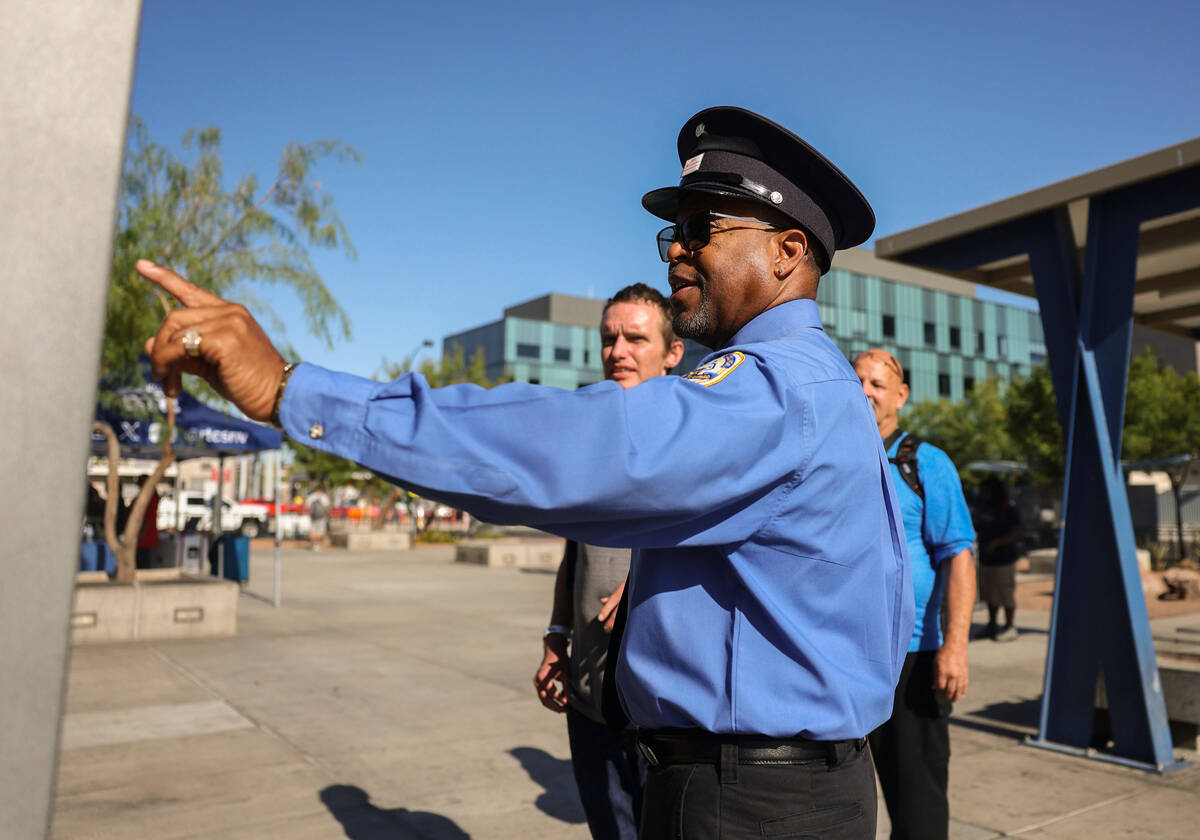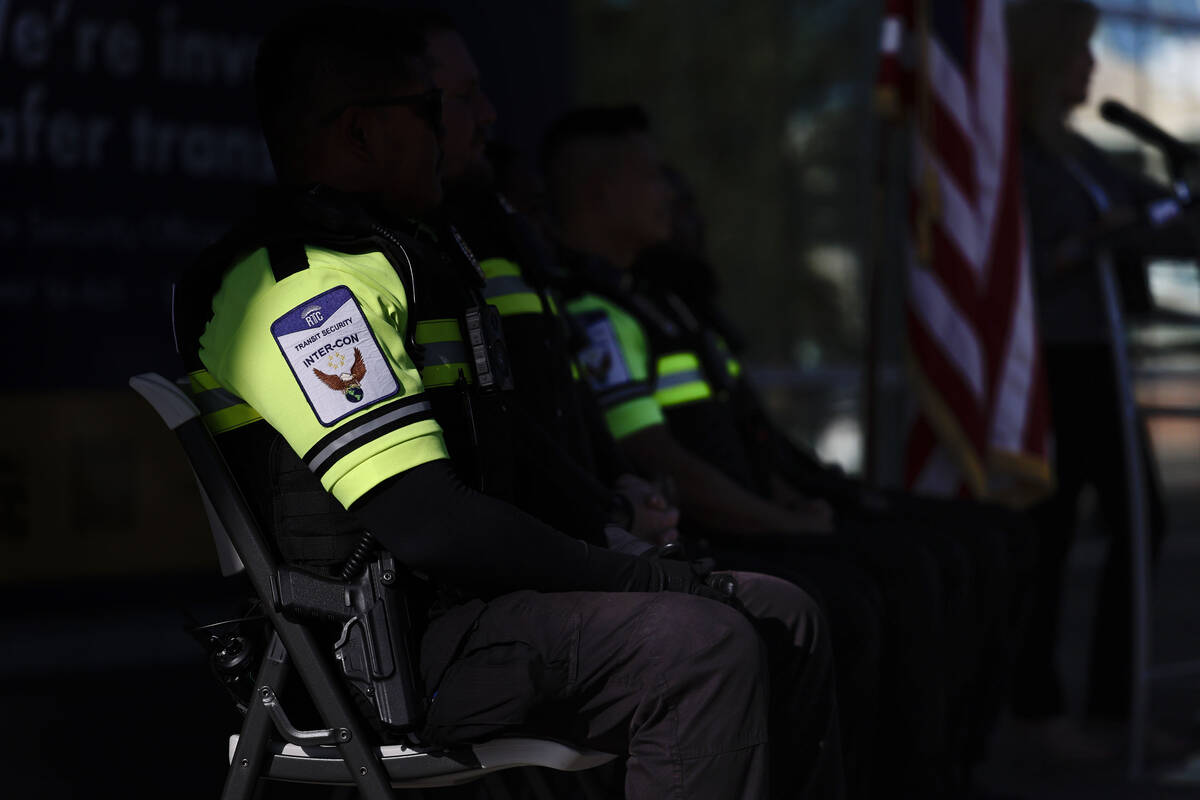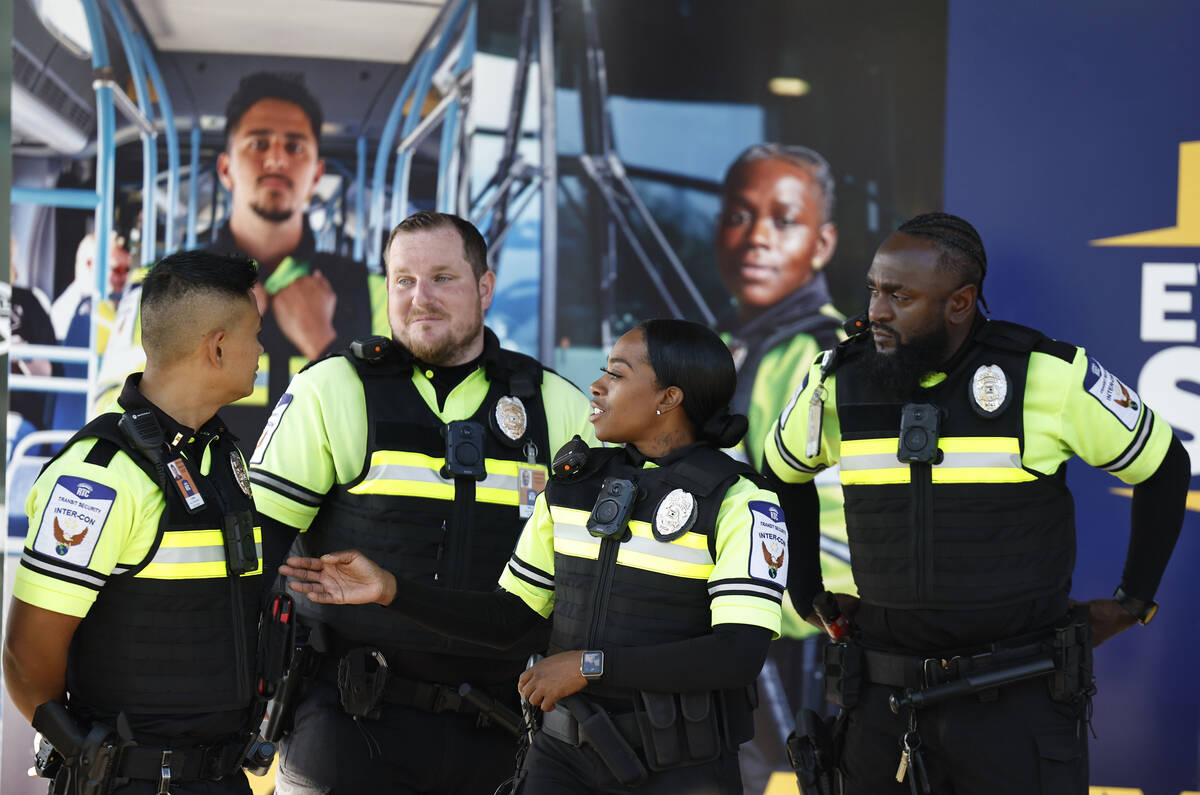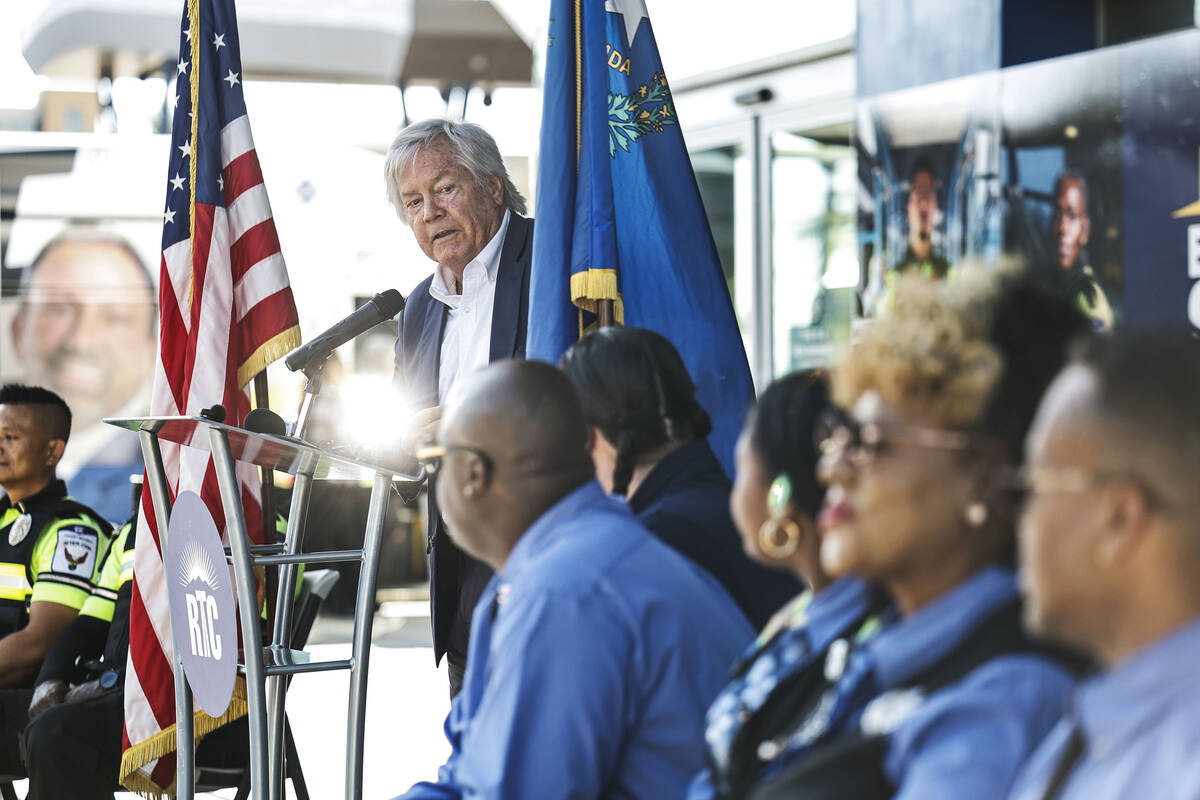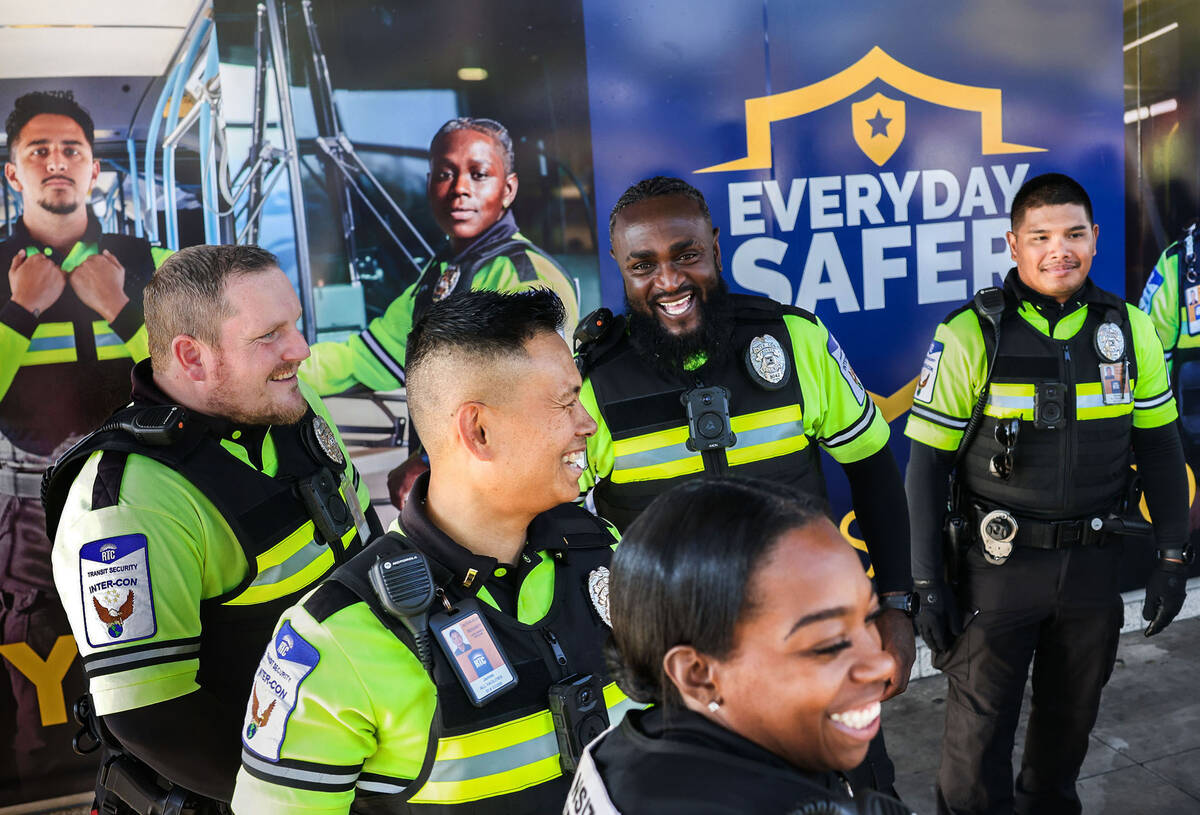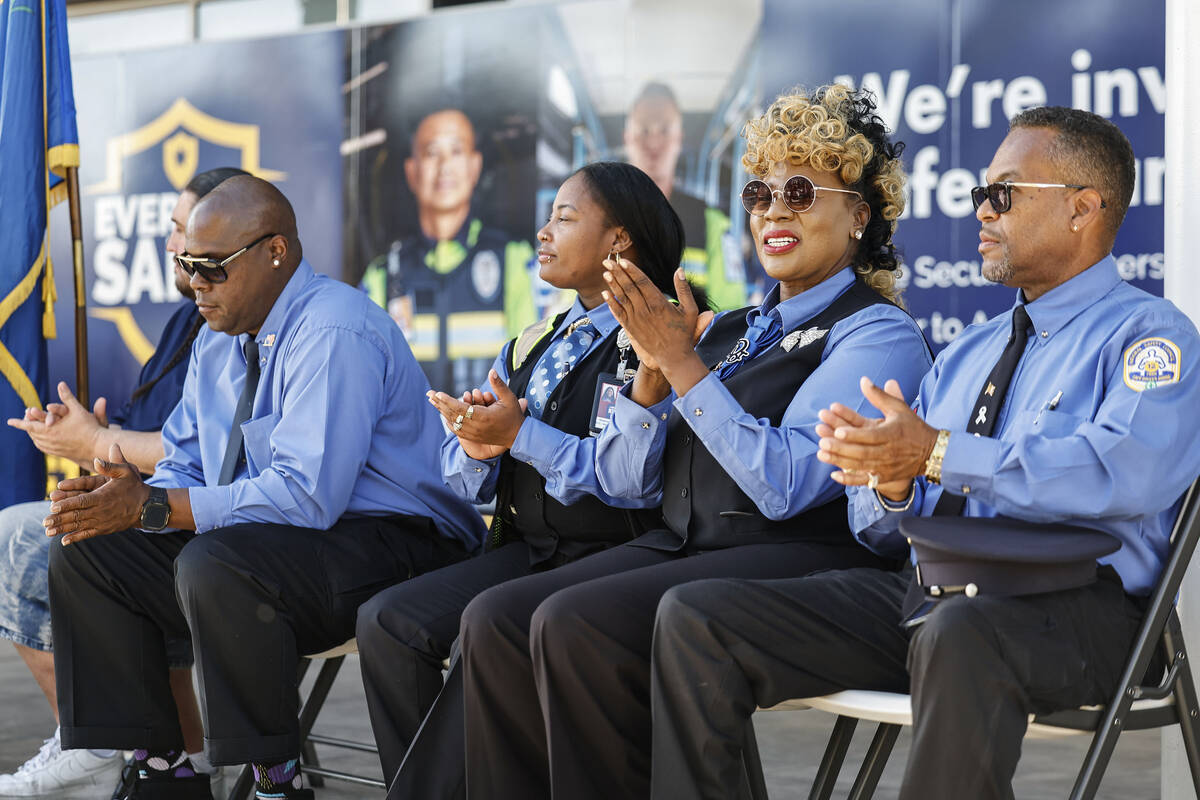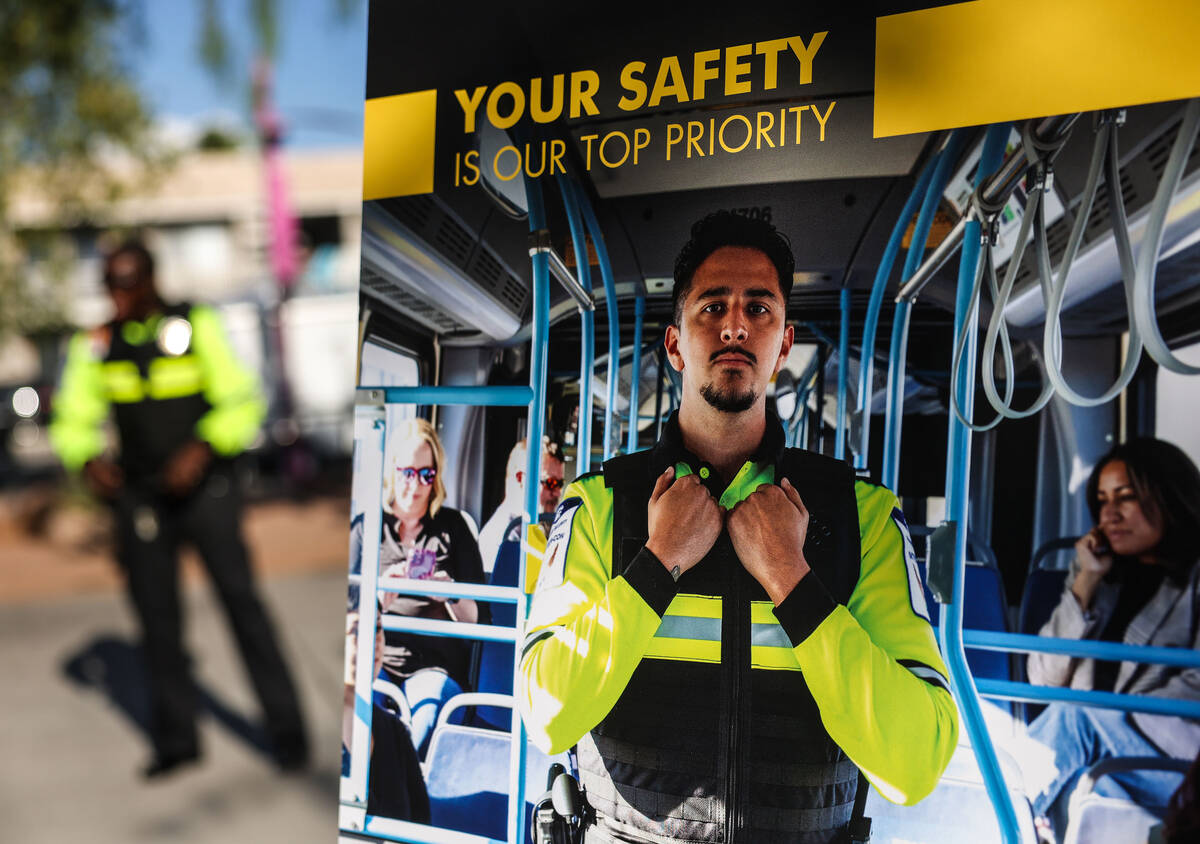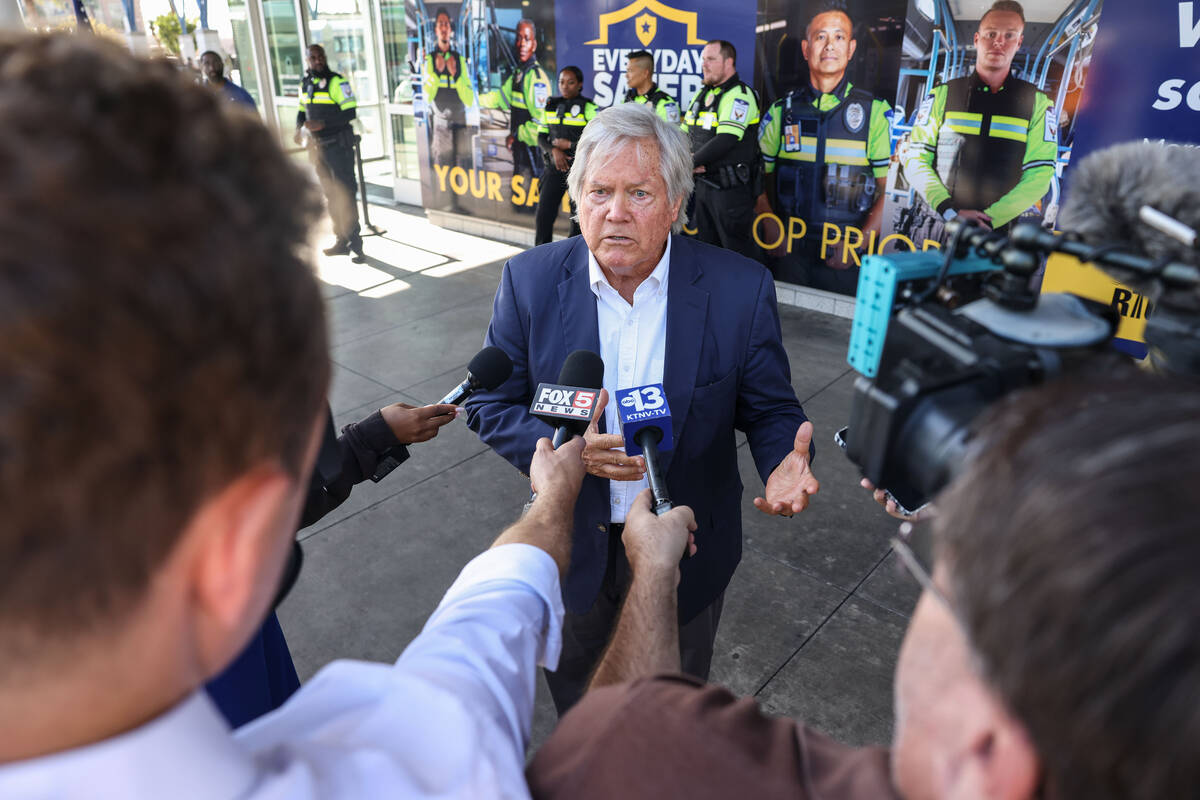‘Win-win for everybody’: New Nevada law brings major change to public transportation
A new Nevada law taking effect this week will increase safety on Las Vegas Valley buses and improve service reliability when on-board incidents occur.
Senate Bill 290 takes effect Wednesday. It allows the security guards that patrol the Regional Transportation Commission’s bus routes and stations to remove unruly passengers themselves without having to wait for police or firefighters to do so.
The inability of RTC security to eject passengers has led to delays while awaiting for emergency response. SB290 was passed by the Legislature and signed into law by Gov. Joe Lombardo during this year’s legislative session.
De-escalation key
Sen. Rochelle Nguyen, D-Las Vegas, said she sponsored the bill after hearing from students, businesses, residents and law enforcement officials who wanted help determining the best way to handle on-board incidents while getting riders on their way.
“That’s exactly what this bill does, and that’s why I’m not surprised that we had strong ground support and strong legislative support and ultimately led to the passage of Senate Bill 290,” Nguyen said Tuesday during a news conference at the Bonneville Transit Center.
Clark County Commissioner Tick Segerblom, who is also an RTC board member, said allowing RTC security to remove unruly riders will also benefit the Metropolitan Police Department and other police and fire departments.
“I realized Metro was very important to this, but I didn’t realize that the fire department was also very important because the firefighters are the ones who have to come and get people off the bus,” Segerblom said. “It’s been a win-win for everybody.”
Latest safety enhancement
The new law is the latest in a series of safety improvements enacted by the RTC over the past few years.
The transit authority beefed up its staff of armed security guards to nearly 350 last year to increase their presence along bus routes and stations and to improve response time to incidents. The officers use body-worn cameras and GPS safety buttons to ensure their own safety while on patrol.
In 2023, the RTC implemented the use of an artificial intelligence weapons detection system called ZeroEyes in all of its transit centers. The technology can detect if someone in a transit center is brandishing a firearm in a threatening manner, with allows RTC to quickly dispatch the appropriate response.
Jim Seebock, Henderson city councilman and RTC Board Member, is a retired Metro officer and his provided input to the RTC’s safety efforts.
“Safety is personal to me,” Seebock said. “I’m optimistic that SB 290 will strengthen and supplement the many safety initiatives already underway. Over the past two years the RTC has made historic investments in safety and security to ensure riders and operators feel protected every day.”
The agency budgeted $26 million for security operations this year.
‘Security is good’
Maya Sabell, a College of Southern Nevada student and RTC bus rider, said that before she started to use the bus, she was unsure about its safety. She worried about dangerous people on buses and was weary of the homeless population that she sometimes encounters. But after riding the RTC buses for the past four years, she said, she sees the rides as a positive addition to her life and welcomes the added safety measures.
“One thing I will say, homeless people are not as mean as you think,” said Sabell, who is majoring in early childhood education at CSN. “I pass by a few of them, and they are kind of cool. Stop judging them. At the same time, I feel like some of them are on drugs, some of them do have real bad problems. To keep your safety and to keep your sanity, yes, security is good.”
Contact Mick Akers at makers@reviewjournal.com or 702-387-2920. Follow @mickakers on X.



